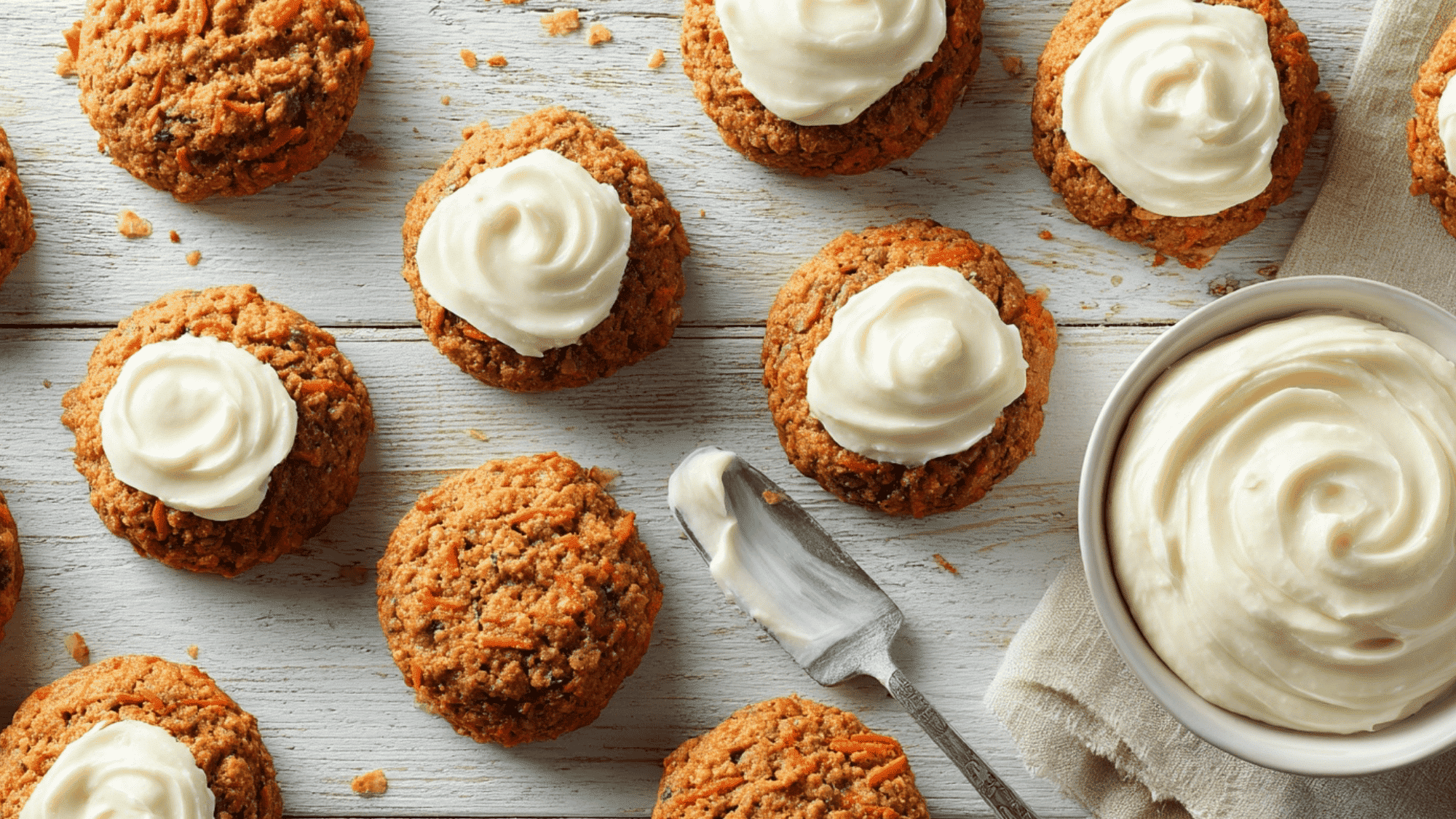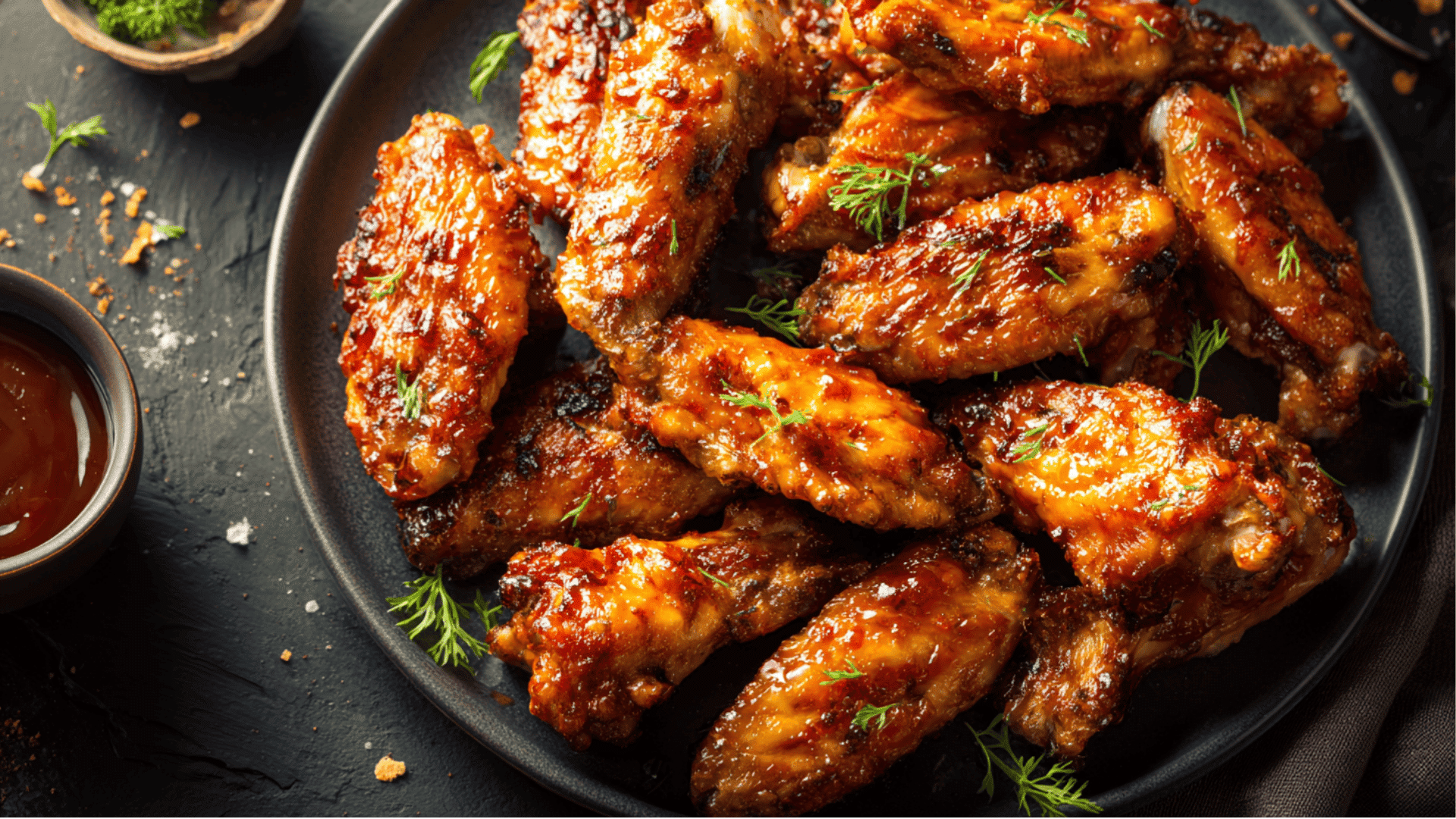Picture this: walking into an Italian grandmother’s kitchen, where the air is thick with the scent of roasted garlic and fresh herbs.
The golden loaves cooling on the counter aren’t just bread; they’re a family tradition passed down through generations.
That first bite takes you straight to the cobblestone streets of Rome or the rolling hills of Tuscany.
The crispy exterior gives way to soft, buttery warmth infused with garlic that’s been treated like the treasure it truly is.
Today, we’re bringing that true Italian experience to your home kitchen. No shortcuts, no artificial flavors – just honest ingredients working in perfect harmony.
Ready to learn what real Italian garlic bread should taste like? Let’s start this culinary path together.
What Makes Authentic Italian Garlic Bread Special?
True Italian garlic bread, or “pane all’aglio,” represents the Italian philosophy of letting quality ingredients shine.
Unlike its American counterpart, loaded with processed garlic powder and artificial butter flavoring, the Italian version celebrates simplicity and freshness.
Italian cooks understand that garlic bread isn’t just a side dish – it’s an expression of respect for good bread and quality olive oil.
The focus remains on technique and timing rather than overwhelming flavors or heavy seasoning.
This approach creates a bread that complements rather than competes with your main course.
Each bite offers a gentle warmth from the garlic, richness from the olive oil, and the satisfying texture contrast between crispy crust and tender interior.
Ingredients for Authentic Italian Garlic BreadCore ingredients
Traditional herb additions
Optional enhancements
|
Step-by-Step Traditional Recipe
Creating authentic Italian garlic bread requires patience and attention to the details that separate good bread from exceptional bread. These techniques have been refined over centuries in Italian kitchens.
Step 1: Prepare the Garlic Oil

Crush garlic cloves with your knife blade, remove skin, and mince finely. Heat olive oil in a small saucepan over low heat.
Add minced garlic to cool oil and heat slowly, stirring occasionally. Infuse for 8-10 minutes without browning the garlic to avoid bitterness.
Remove from heat when garlic becomes fragrant and lightly golden.
Tip: If garlic browns too quickly, remove the pan from the heat and let residual heat finish the infusion.
Step 2: Prepare the Bread
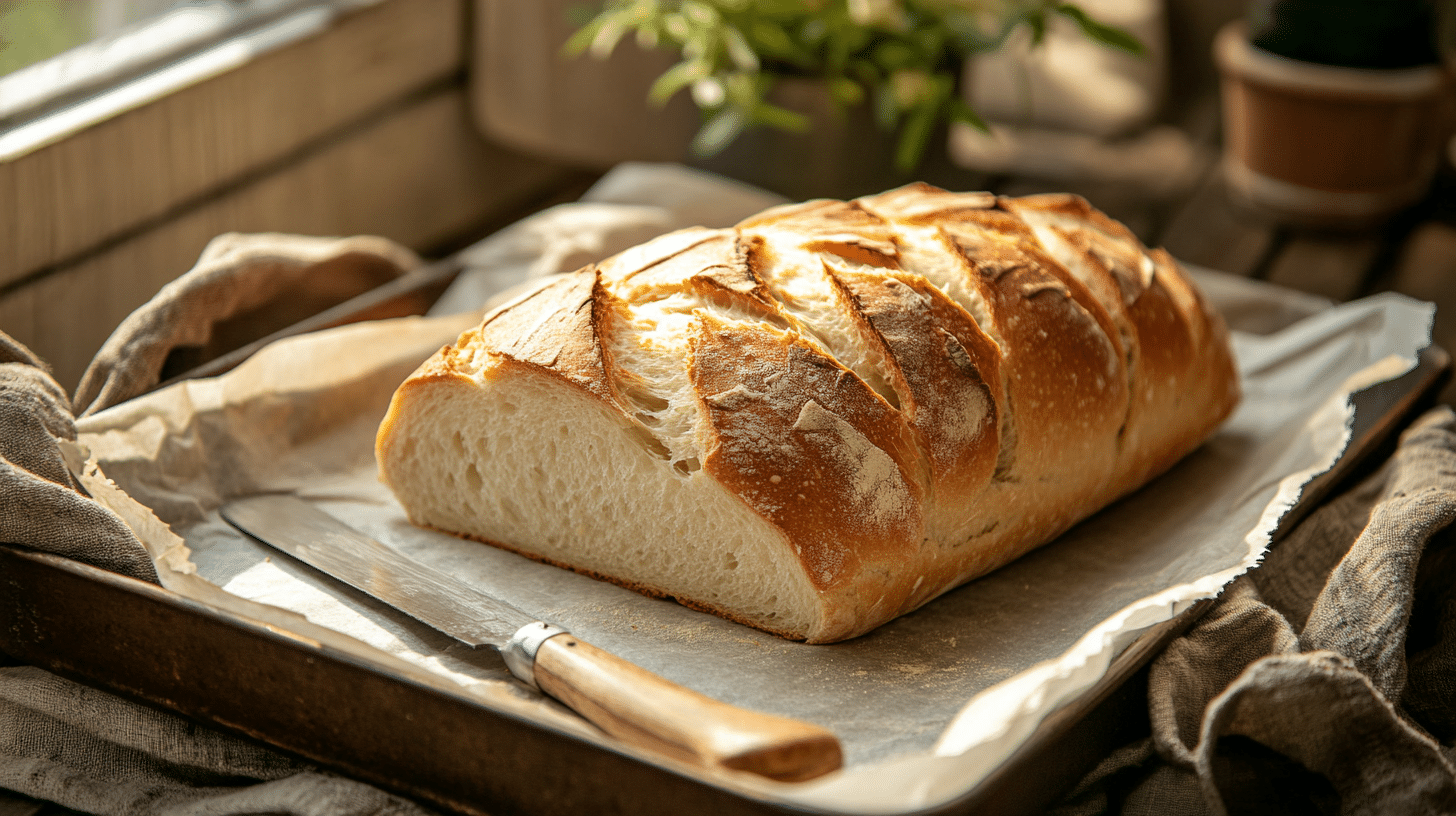
Preheat your oven to 425°F (220°C). Cut the bread in half horizontally, creating two large pieces. For round loaves, slice into thick pieces while keeping the shape intact.
Score the cut surfaces in a crosshatch pattern, making cuts about 1/2 inch deep. This allows the garlic oil to penetrate and creates more surface area for crispy-tender contrast.
Place the bread cut-side up on a parchment-lined baking sheet.
Tip: Make sure your scoring cuts are deep enough to hold the garlic oil but not so deep that the bread falls apart when sliced.
Step 3: Apply the Garlic Oil Mixture
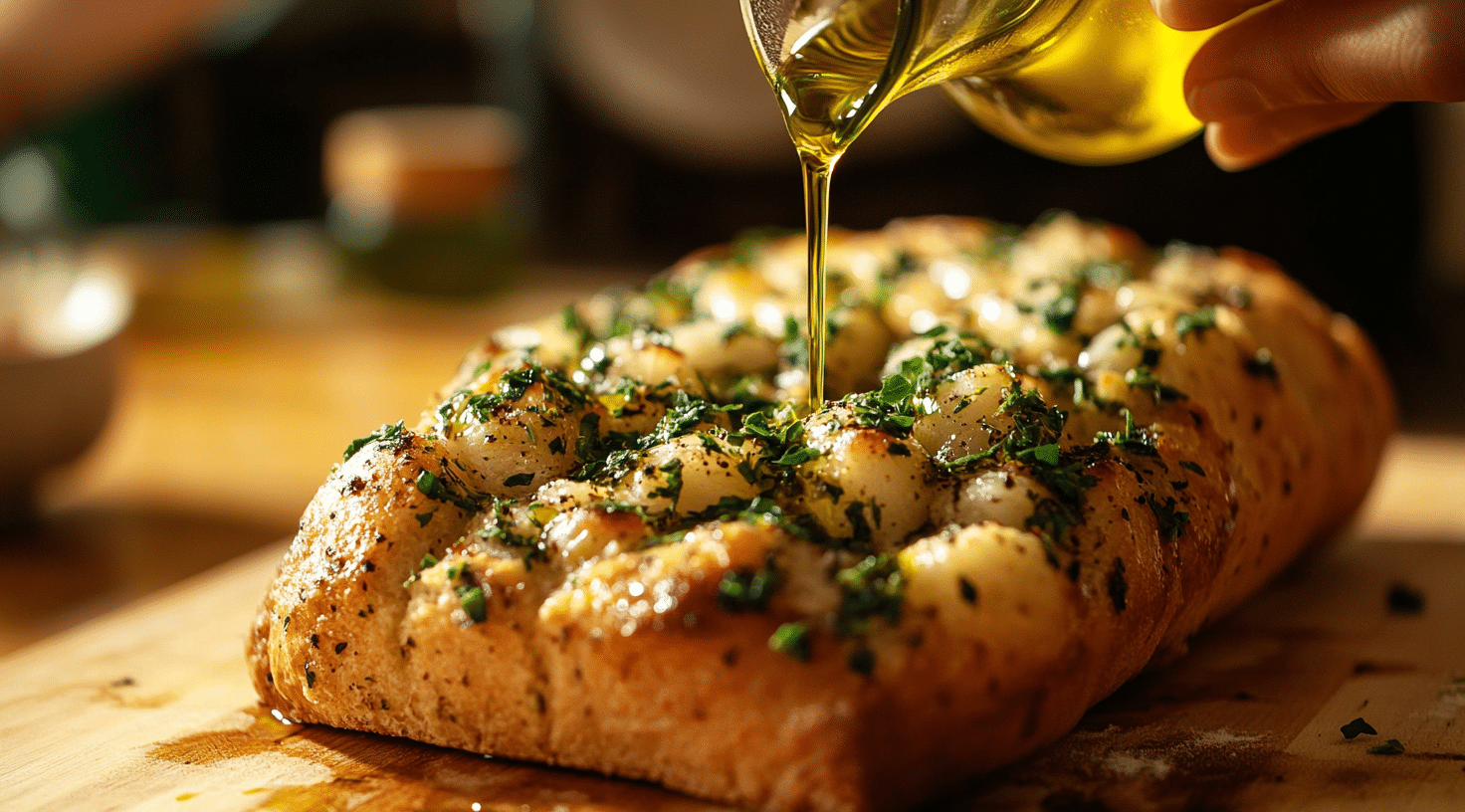
Using a container or spoon, generously apply the warm garlic oil to the cut surfaces. Get the oil into all scored cuts and spread evenly.
Season with sea salt and freshly ground black pepper. Sprinkle fresh herbs over the oiled surfaces, pressing lightly so they stick.
The bread should look well-coated but not swimming in oil.
Tip: Save a small amount of garlic oil to brush on after baking for an extra burst of flavor and shine.
Step 4: Bake to Perfection
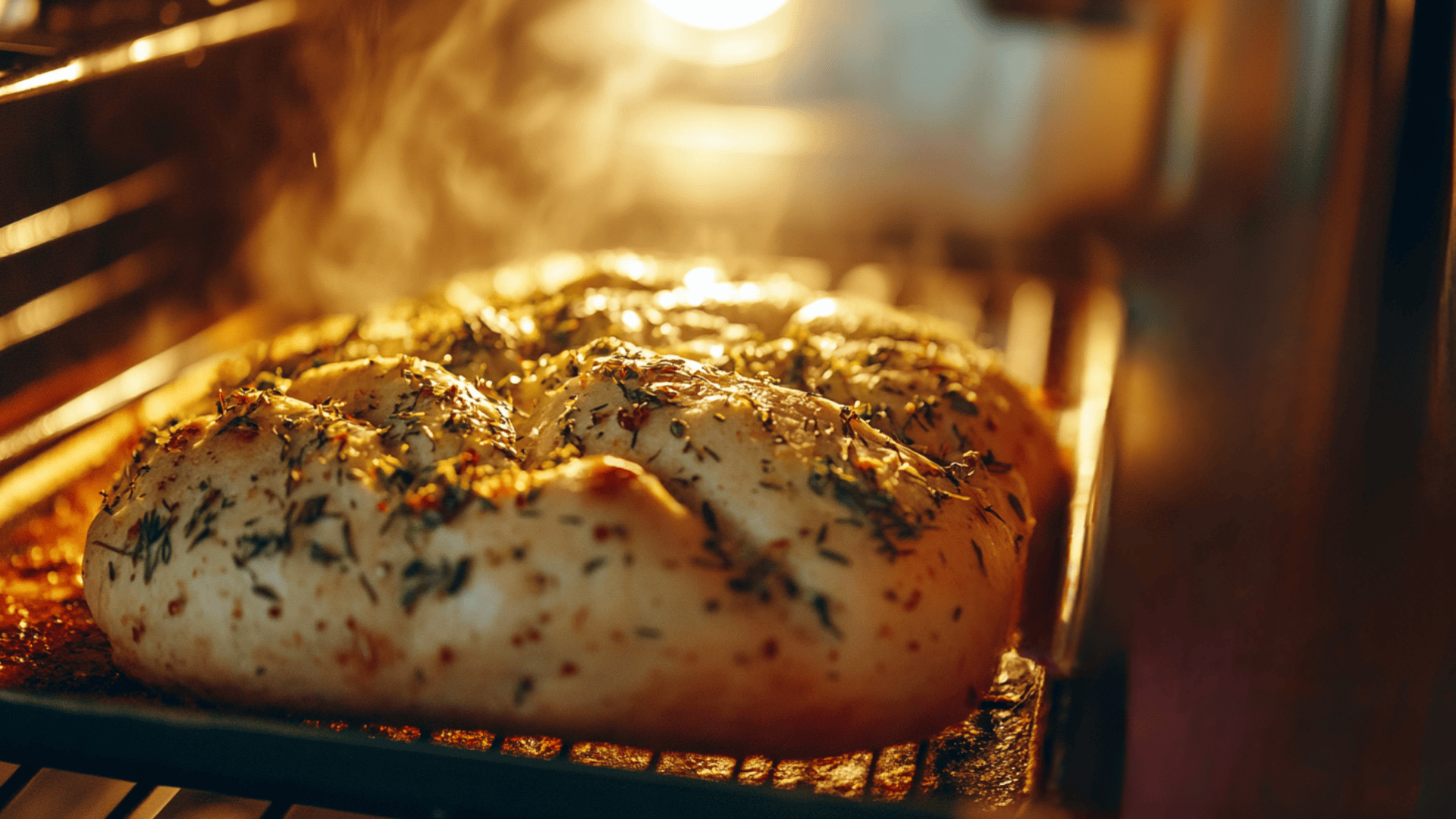
Place in preheated oven and bake for 10-12 minutes until edges are golden and surface is crispy.
For extra color, broil for 1-2 minutes, watching carefully to prevent burning.
Remove and let cool for 2-3 minutes before serving. Serve immediately while warm for the best texture and flavor..
Tip: Test doneness by gently pressing the center – it should spring back slightly while edges feel firm and crispy.
Nutritional Information
Per serving (1/6 of loaf):
| Nutrient | Amount |
|---|---|
| Calories | 185kcal |
| Fat | 8g |
| Carbohydrates | 24g |
| Protein | 5g |
| Fiber | 2g |
| Sodium | 320mg |
Understanding the nutritional profile helps you incorporate Italian garlic bread into a balanced diet while appreciating its place in the Mediterranean eating pattern.
Health Benefits of Italian-Style Garlic Bread
Understanding the nutritional advantages of authentic Italian garlic bread helps you appreciate why this traditional approach makes sense for both flavor and health.
The combination of quality olive oil, fresh garlic, and whole-grain bread creates a more nutritious option than heavily processed alternatives.
- Supports heart health: Extra virgin olive oil contains monounsaturated fats and antioxidants that may help reduce inflammation and support cardiovascular function.
- Provides immune support: Fresh garlic contains allicin, a compound known for its antimicrobial properties and potential immune system benefits.
- Delivers sustained energy: Using quality bread, especially whole-grain varieties, provides complex carbohydrates for steady energy release.
Fact: Crushing or chopping garlic and letting it sit for 10 minutes before cooking can help preserve more of its beneficial compounds.
Regional Italian Variations
Italy’s diverse regional cuisines offer different approaches to garlic bread, each reflecting local ingredients and culinary traditions. These variations show how one simple concept can be interpreted in countless delicious ways.
Tuscan-Style Garlic Bread
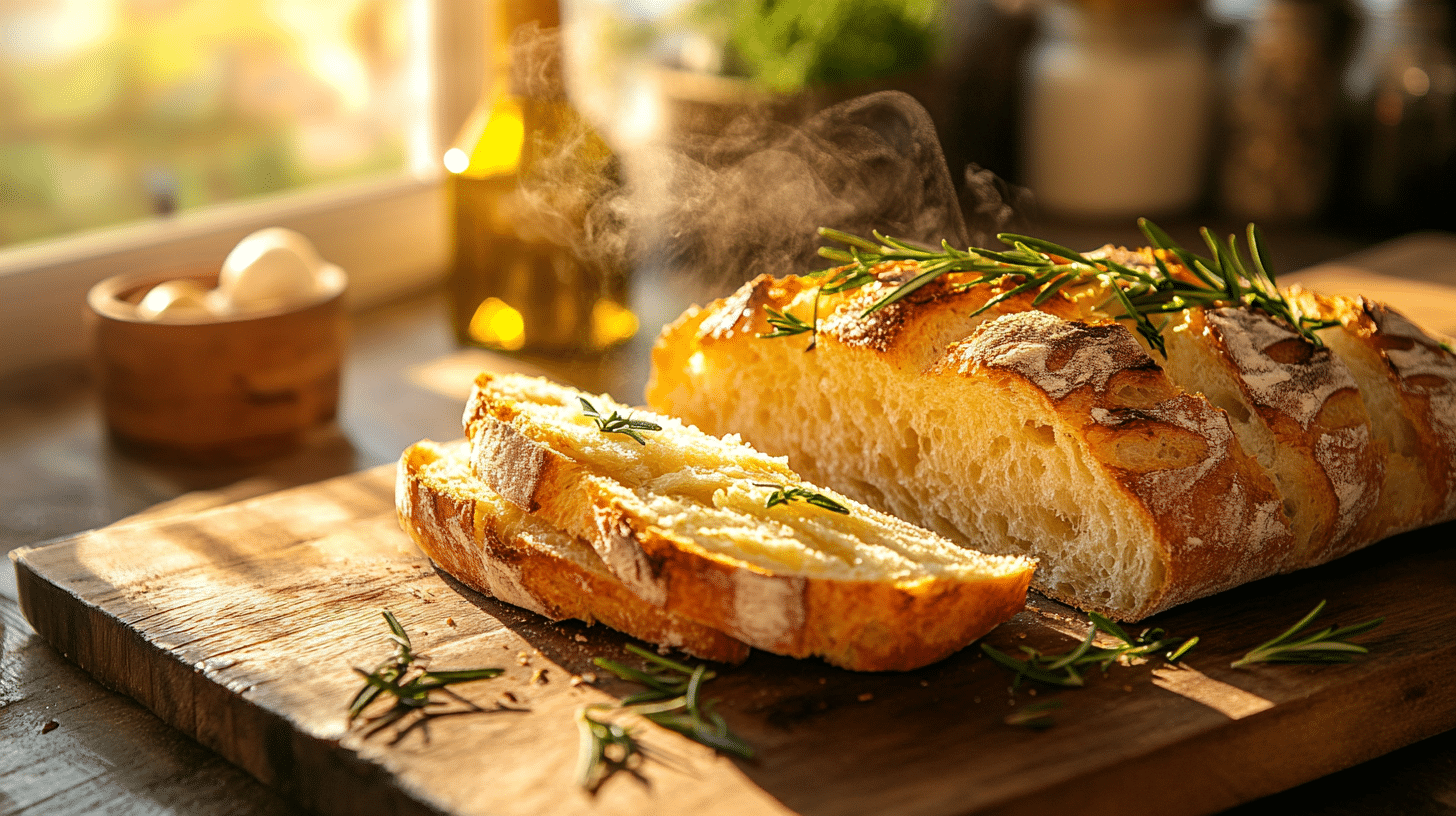
Tuscan cooks often add fresh rosemary and use their famous unsalted bread as the base.
The rosemary’s piney fragrance pairs beautifully with garlic, while the unsalted bread allows the other flavors to shine without competing with saltiness.
Drizzle with the finest Tuscan olive oil you can find, as this region produces some of the world’s most prized oils. The result is earthy, herbaceous, and deeply satisfying.
Sicilian Garlic Bread
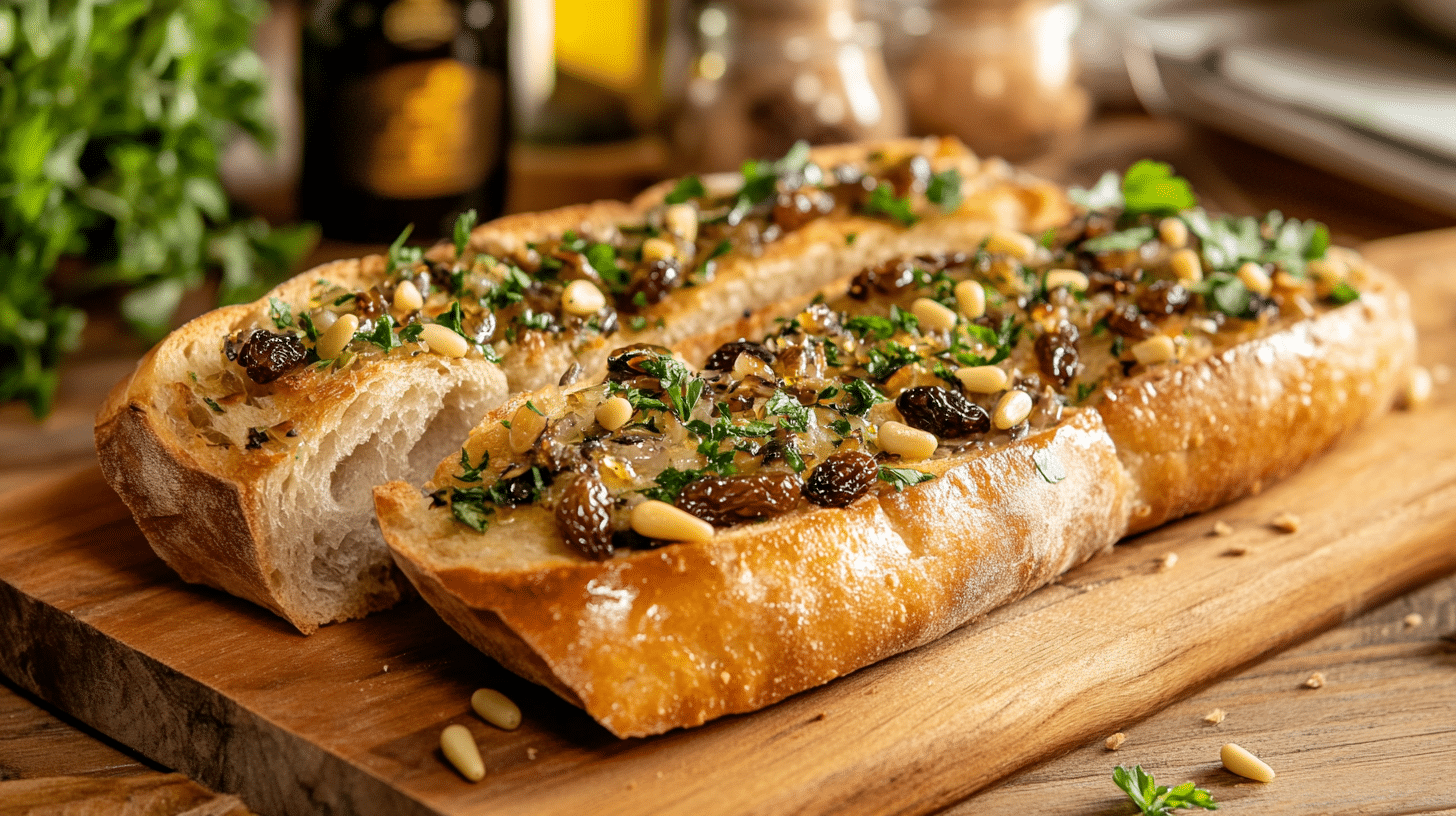
Sicily’s version often includes pine nuts, raisins, and a touch of anchovy paste for complexity.
This combination might sound unusual, but it creates layers of flavor that represent the island’s multicultural culinary history.
The sweetness from raisins balances the saltiness of anchovies, while pine nuts add richness and texture. It’s a more complex interpretation that works beautifully with robust red wines.
Roman-Style Garlic Bread

Romans keep it simple with just garlic, olive oil, and salt, but they perfect the technique of achieving the ideal texture contrast.
The focus is on using the best possible ingredients and executing the method flawlessly.
This minimalist approach lets you truly taste each component, making it perfect for showcasing high-quality bread and exceptional olive oil.
Storage and Reheating Tips
Proper storage techniques ensure your Italian garlic bread maintains its quality and can be enjoyed over multiple meals.
- Same-day storage: Keep leftover garlic bread wrapped in aluminum foil at room temperature for up to 4 hours. This maintains moisture while preventing the surface from becoming soggy.
- Refrigeration: For longer storage, wrap tightly in plastic wrap and refrigerate for up to 2 days. The bread will lose some crispiness, but can be refreshed in the oven.
- Reheating method: Wrap refrigerated bread in foil and reheat in a 350°F oven for 5-7 minutes. Remove foil for the last 2 minutes to restore crispiness to the surface.
Fact: Never microwave garlic bread for reheating, as this creates a chewy, unpleasant texture that destroys the careful balance between crispy exterior and soft interior.
Contemporary Italian cooks are finding ways to honor tradition. while accommodating modern dietary preferences and nutritional awareness.
Bringing Italy to Your Table
Italian garlic bread connects you to centuries of culinary wisdom and family traditions.
This simple preparation shows that the best food comes from treating humble ingredients with respect.
When you properly infuse oil and choose quality bread, you’re participating in a cultural practice that brings families together.
You don’t need expensive equipment to create something special. From weeknight dinners to gatherings, Italian garlic bread adds warmth and tradition to any meal.
Remember – you’re carrying forward Italian culinary heritage that has nourished families for generations.
What’s your favorite way to enjoy Italian garlic bread? Share your family traditions or tell us about your first experience with authentic Italian flavors!



